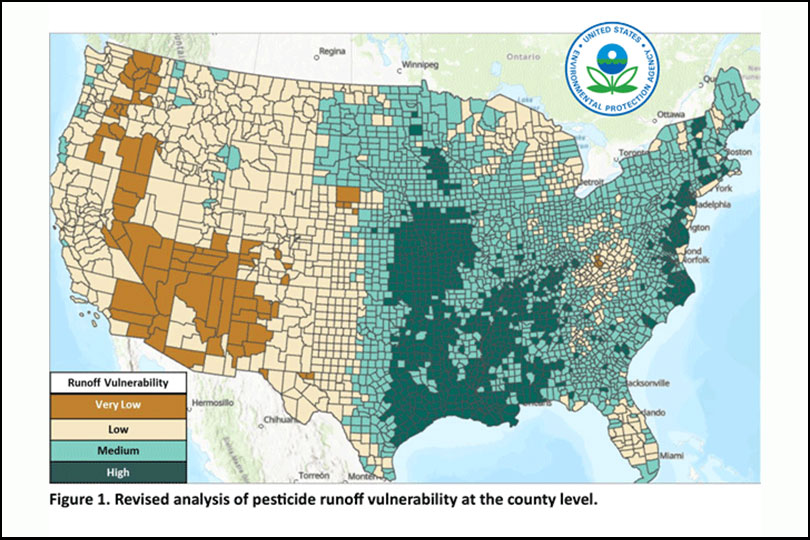By Jessica Domel
Multimedia Reporter
The Environmental Protection Agency (EPA) finalized the strategy it plans to use to determine what, if any, mitigation measures should be added to product labels when registering or reviewing an herbicide.
“Finalizing our first major strategy for endangered species is a historic step in EPA meeting its Endangered Species Act obligations,” Jake Li, deputy assistant administrator for Pesticide Programs for the Office of Chemical Safety and Pollution Prevention, said. “By identifying protections earlier in the pesticide review process, we are far more efficiently protecting listed species from the millions of pounds of herbicides applied each year and reducing burdensome uncertainty for the farmers that use them.”
EPA said the final strategy includes more options for mitigation measures than the draft strategy.
It reduces the level of mitigation needed for applicators who have already implemented measures identified in the strategy to reduce pesticide movement from treated fields, according to the agency.
The final strategy also reportedly recognizes that applicators who work with a runoff or erosion specialist or participate in a conservation program are more likely to effectively implement mitigation measures.
EPA said the strategy uses the most updated information and processes to determine whether an herbicide will impact a species listed as threatened or endangered and will identify protections to address any impacts.
The agency will reportedly consider where a species lives, what it needs to survive, where the pesticide will end up in the environment and what kind of impacts the pesticide might have if it reaches the species.
The final strategy will also reportedly expedite how EPA complies with the Endangered Species Act through future consultations with U.S. Fish and Wildlife Service by identifying mitigations to address the potential impacts of each herbicide on listed species even before the agency completes the consultation process.
The agency said it is working on a website to help pesticide applicators navigate the changes.
Agricultural organizations and other groups continue to review the final strategy.
Farm groups are concerned with the complexity of the framework and whether farmers and applicators will be able to understand and implement it.
How EPA evaluates whether pesticides pose a genuine risk to endangered species is also a concern to agricultural groups.
In a letter sent to EPA several weeks ago, Farm Bureau and more than 300 other groups noted “EPA’s current process is unduly conservative, greatly overestimates risks and demands farmers adopt far more restrictions than are truly necessary to protect species.”
Rod Snyder, former EPA senior advisor for agriculture, told Texas Farm Bureau Radio in May that the agency received more than 10,000 comments on the draft herbicide strategy when it was released.
He said at the time, EPA was working to reduce mitigation in certain instances where it may not be needed, like flat ground and low precipitation areas where the product might just not be moving as much. He said EPA was also refining its maps.
The herbicide strategy, and a draft insecticide strategy released in July, are part of a settlement EPA reached last September with the Center for Biological Diversity.
The center and other environmental groups have sued the EPA several times over the years over pesticide registrations.
The public can comment on EPA’s draft insecticide strategy on regulations.gov through Sept. 23.


Leave A Comment